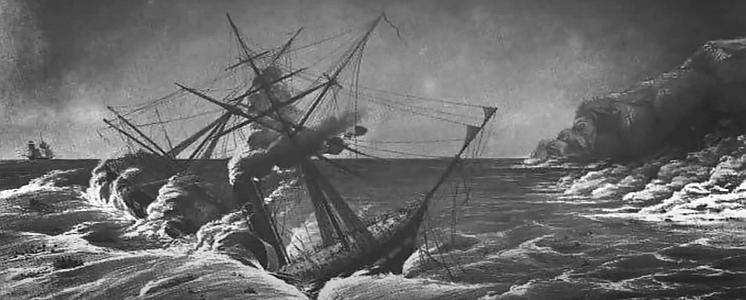 HMS Birkenhead was one of the first iron-hulled ships built for the Royal Navy. She was designed as a steam frigate, but was converted to a troopship before being commissioned in 1851.
HMS Birkenhead was one of the first iron-hulled ships built for the Royal Navy. She was designed as a steam frigate, but was converted to a troopship before being commissioned in 1851.
While transporting troops and a few civilians to Algoa Bay, the Birkenhead was wrecked on 26 February 1852 at Danger Point near Gansbaai, 87 miles (140 km) from Cape Town in the Cape Colony of South Africa. There were insufficient serviceable lifeboats for all the passengers, and the soldiers famously stood in ranks on board, thereby allowing the women and children to board the boats safely and escape the sinking.
Only 193 of the estimated 643 people on board survived, and the soldiers’ chivalry gave rise to the unofficial “women and children first” protocol when abandoning ship, while the “Birkenhead drill” of Rudyard Kipling’s poem came to describe courage in the face of hopeless circumstances.
Remembering the Birkenhead drill
To take your chance in the thick of a rush, with firing all about,
Is nothing so bad when you’ve cover to ‘and, an’ leave an’ likin’ to shout;
But to stand an’ be still to the Birken’ead drill is a damn tough bullet to chew,
An’ they done it, the Jollies – ‘Er Majesty’s Jollies – soldier an’ sailor too!
Their work was done when it ‘adn’t begun; they was younger nor me an’ you;
Their choice it was plain between drownin’ in ‘eaps an’ bein’ mopped by the screw,
So they stood an’ was still to the Birken’ead drill, soldier an’ sailor too
